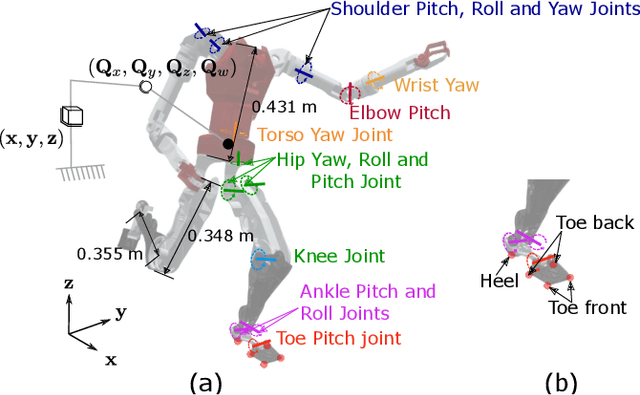Sarah Roelker
A Biomechanics-Inspired Approach to Soccer Kicking for Humanoid Robots
Jul 19, 2024



Abstract:Soccer kicking is a complex whole-body motion that requires intricate coordination of various motor actions. To accomplish such dynamic motion in a humanoid robot, the robot needs to simultaneously: 1) transfer high kinetic energy to the kicking leg, 2) maintain balance and stability of the entire body, and 3) manage the impact disturbance from the ball during the kicking moment. Prior studies on robotic soccer kicking often prioritized stability, leading to overly conservative quasi-static motions. In this work, we present a biomechanics-inspired control framework that leverages trajectory optimization and imitation learning to facilitate highly dynamic soccer kicks in humanoid robots. We conducted an in-depth analysis of human soccer kick biomechanics to identify key motion constraints. Based on this understanding, we designed kinodynamically feasible trajectories that are then used as a reference in imitation learning to develop a robust feedback control policy. We demonstrate the effectiveness of our approach through a simulation of an anthropomorphic 25 DoF bipedal humanoid robot, named PresToe, which is equipped with 7 DoF legs, including a unique actuated toe. Using our framework, PresToe can execute dynamic instep kicks, propelling the ball at speeds exceeding 11m/s in full dynamics simulation.
 Add to Chrome
Add to Chrome Add to Firefox
Add to Firefox Add to Edge
Add to Edge